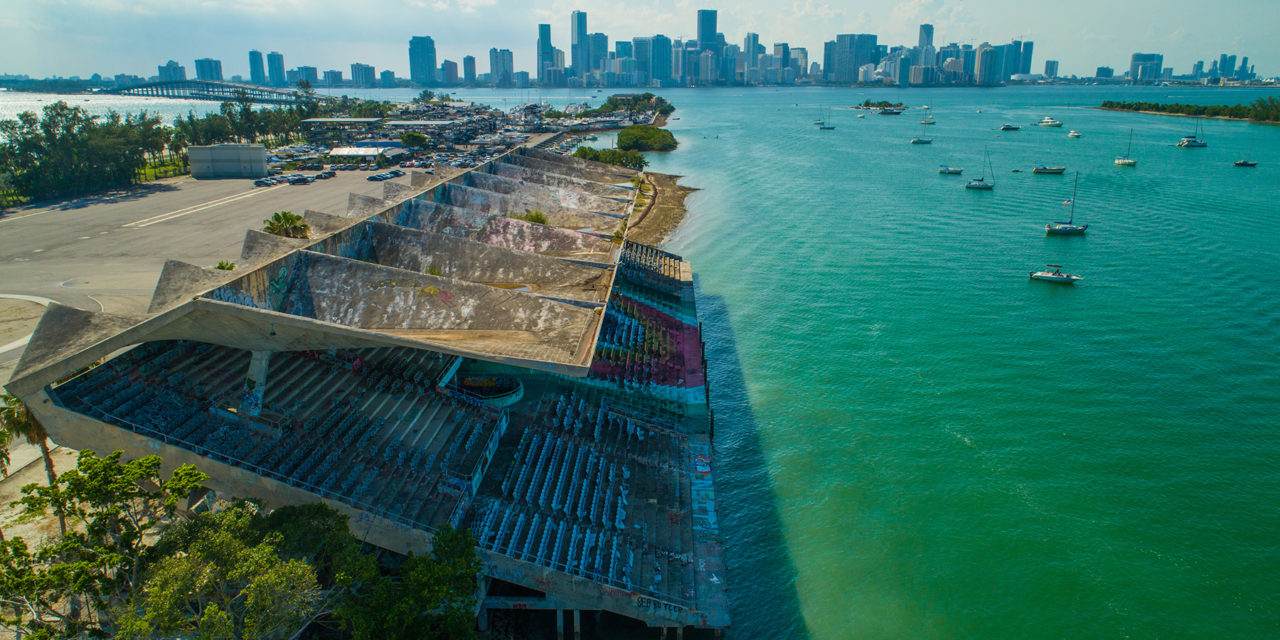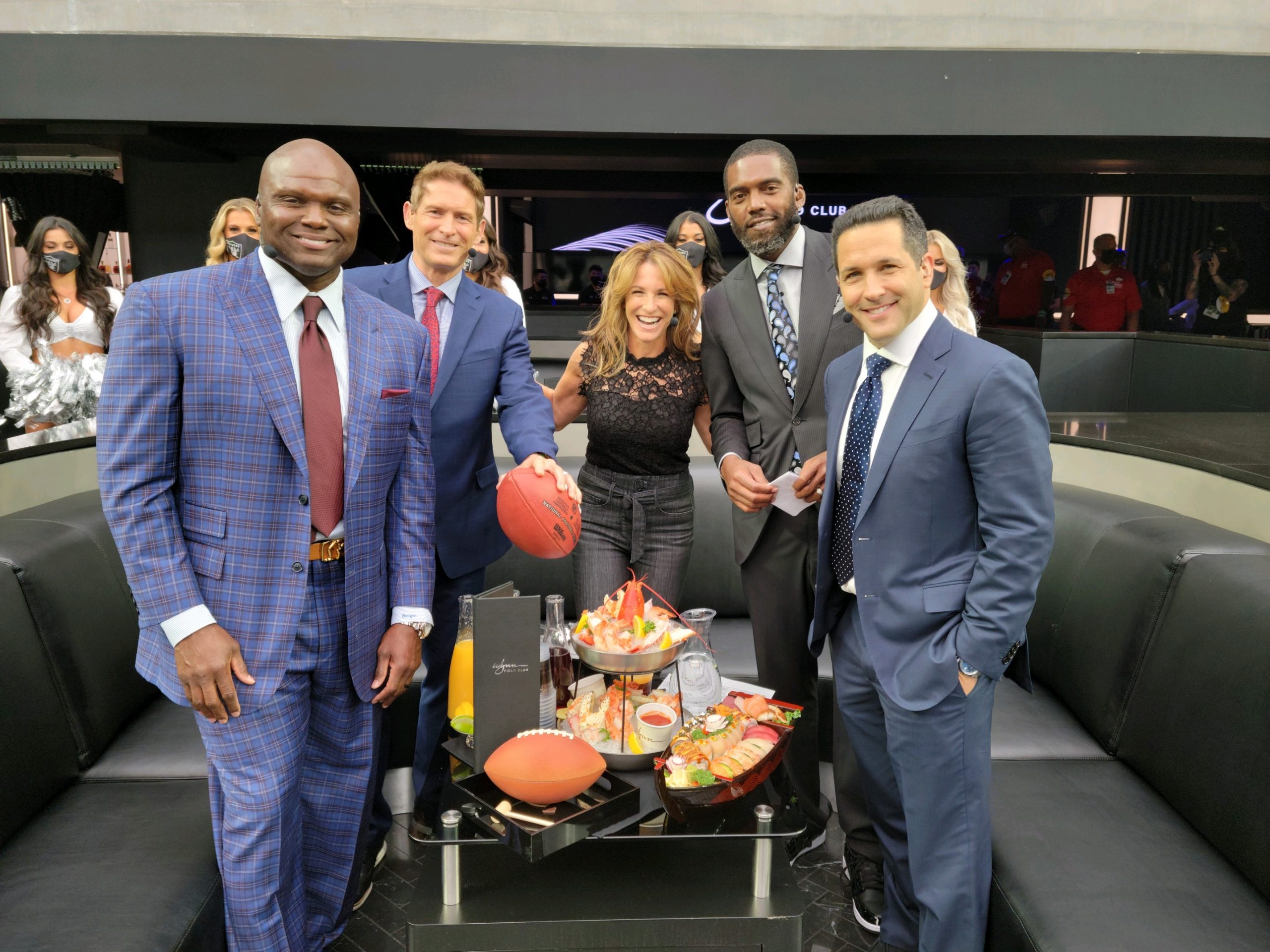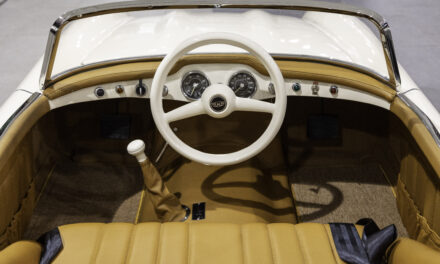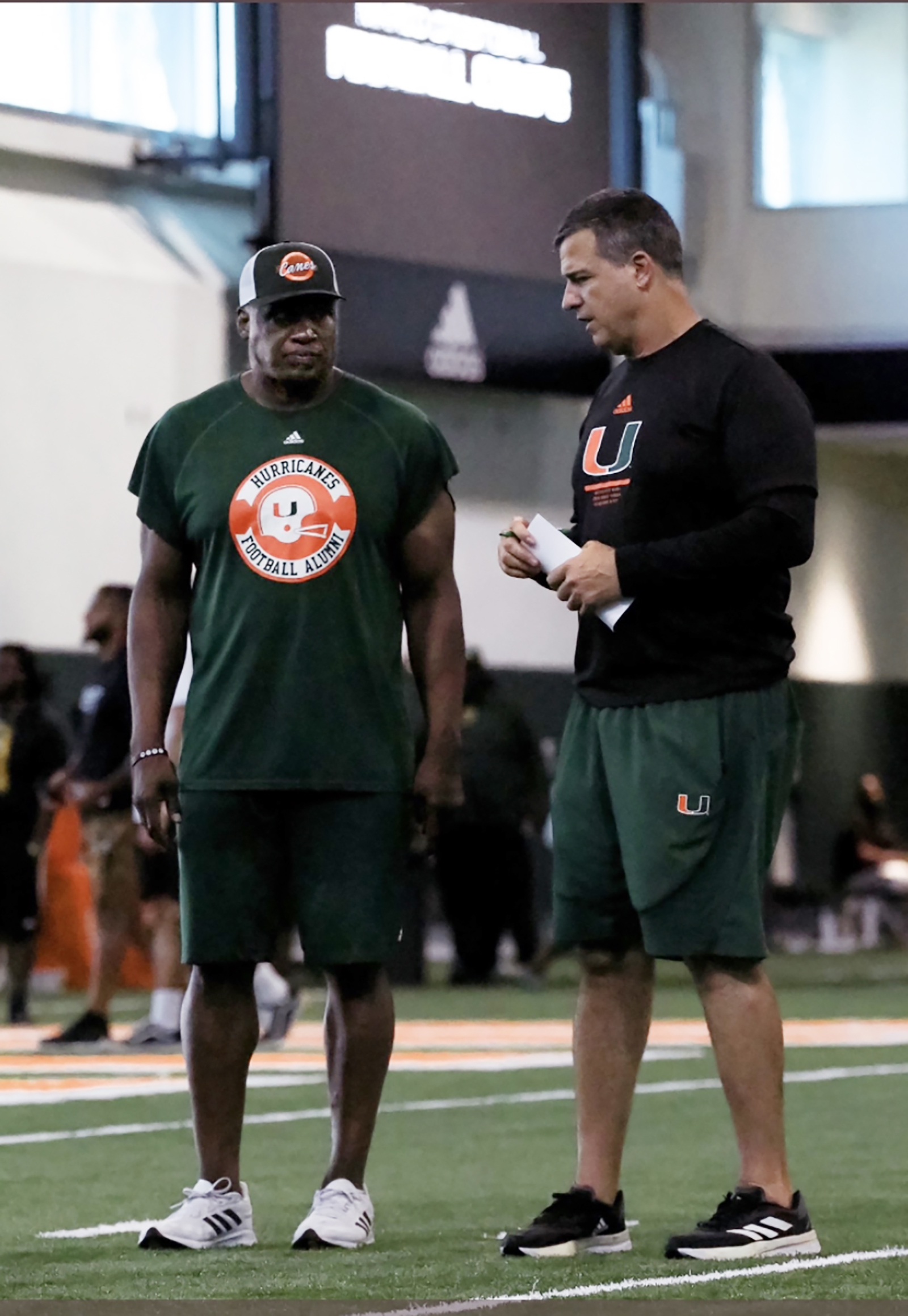Will they ever get around to restoring Miami Marine Stadium to a semblance of its former self? Or will it remain in limbo, a relic of the past which has been shut down for over 30 years, despite its colorful history?
It’s coming up on a year since a $61.2 million bond issue was tabled, which would’ve approved the restoration of a place where the list of celebrities who appeared there ranged from Elvis Presley to Richard Nixon, to the Beach Boys, to Queen, to Mitch Miller. But nothing has changed.
Not only that, but no one involved in the movement seems to be willing to talk about it. No one from the National Trust for Historic Preservation, which named it among its 11 most endangered sites in 2009, has been available to discuss that effort.
And the stadium website, marinestadium.org, does not appear to have been updated since—get this—2014, while its Facebook page hasn’t made an entry since 2015.
While the rest of the country and the world has moved on—for better or worse—the fate of the stadium remains as up in the air now as when the restoration movement got underway nearly 15 years ago.
Before trying to unravel that mystery, time for a history lesson.
The Commodore Ralph Munroe Marine Stadium was built on Virginia Key in 1963, its primary purpose expected to be powerboat racing. Designed by 28-year-old Cuban immigrant Hilario Candela, the 6,656 seat stadium had a unique design with a 326-foot cantilevered fold-plate roof.
Dedicated on December 28, 1963, the stadium got off to a tragic start when speed boat racer James Tapp was killed on opening day. But it wasn’t too long after that before the charm of the site, which had a spectacular view of Miami Beach and the downtown Miami skyline, began to take hold.
Over the ensuing years the stadium expanded its horizons to became an all-purpose facility. There were political rallies—like when Sammy Davis introduced, then hugged Richard Nixon in 1972. There were concerts on its floating stage—everyone from Ray Charles to the Beach Boys, to The Who, to Steppenwolf, to Queen, to Jimmy Buffett, not to mention the Boston Pops and Miami Philharmonic. There was boxing. There was even a movie: 1967’s “Clambake,” featuring the one and only Elvis!
But gradually the novelty of the place began to diminish. Less money went into the stadium’s upkeep. And after Hurricane Andrew ravaged the area in 1992, the City of Miami declared the stadium unsafe and shuttered it on September 18, 1992.
Despite a subsequent engineering study contradicting that declaration, pronouncing the stadium sound and unharmed by Andrew, Miami Marine Stadium has been closed ever since.
Over the ensuing decade and a half while the country went through the Bill Clinton years, the horror of September 11 and all that followed, the stadium became a haven for graffiti and vandalism. That triggered the 2008 formation of the Friends of Miami Marine Stadium (FMMS), whose mission became bringing it back to life.
The Friends, coupled with the National Trust, immediately began to raise money towards that effort. By July 2009, they put $50,000 into an engineering study to evaluate the structural condition of the all-concrete stadium. Two months later, Jimmy Buffett recorded a video which generated tons of publicity.
By April, 2010 Miami-Dade County Commissioners had passed a resolution allocating $3 million to start the restoration process. But the wheels of change grind slowly. While more money kept coming in and public sympathy grew as a partnership was reached between the FMMS, the Miami Sports and Exhibition Authority (a quasi-public organization) and the Miami City Commission to restore the Marine Stadium, for whatever reason the actual groundwork kept getting put off.
While the Miami Herald repeatedly supported the restoration in its editorials and politicians seemed inclined to go along… while a business plan was developed and approved… while celebrities like singer Gloria Estefan got involved, the job kept getting pushed off.
“It was wrongly closed down after Hurricane Andrew,” Estefan said in 2014, having become a member of the National Trust board and a stadium spokeswoman. “There is no reason why we can’t keep it.”
Estefan also voiced a powerful video, “Miami Marine Stadium Needs You,” showing scenes of the past and how the stadium had since become a decayed eyesore, which she said should come alive again, “So we can enjoy it once more. So we can appreciate its beauty once more. So this can be more than just imagination.”
That was 2014. This is 2023. Since then, more money has been raised through various grants and donations and more studies have been done. Consequently, by 2016 the city had authorized up to $45 million in a bond financing the stadium restoration, but that bond was never approved.
The years dragged on while costs rose. By last February that bond had soared to $61.2 million. A vote was originally scheduled for approval in March but was then pushed back until May.
But nothing happened in May. Nor in June, July, or August on through the rest of 2022 into 2023. And there seems to be nothing scheduled, which baffles stadium proponents.
“They don’t celebrate Miami’s history,” former Miami mayor Tomás Regalado, told the Washington Post last February “They’d rather talk about the future.
“I understand that, but you cannot build a future if you don’t have a history and you don’t celebrate your history.”
Meanwhile, Hilary Candela, whose late father Hilario designed the place nearly 60 years ago, isn’t at all pleased. “We could talk about the city becoming the crypto capital of the world, and yet we can’t find the way to raise the necessary funds to bring the stadium back to life,” she told the Post. “I hope it happens.
“It should happen. It needs to happen.”
But will it? Now—or ever?









